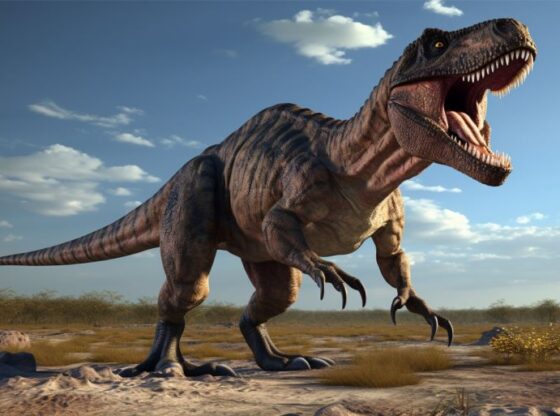Published On 3/11/2025
|
Last update: 12:32 (Mecca time)
Researchers from North Carolina State University announced that the previously discovered dinosaur known as Nanotyrannus lancensis was not just a “teenager” of the famous Tyrannosaurus rex (T. rex) as was believed for decades, but rather an independent species that lived alongside it.
This dinosaur was distinguished by its agility and hunting speed, adding a new layer of complexity to the world of giant predators 66 million years ago.
The results, which were published in… study Recently, the prestigious journal Nature described it as the most decisive moment in paleontology since the discovery of T. rex itself.
Two fighting dinosaurs
Since the discovery of the first skull in the 1940s, controversy has raged over the identity of this relatively small dinosaur, only 5 to 6 meters long, compared to 12 meters for T. rex. Is it just a baby T-Rex that has not yet fully grown? Or was it another organism that lived in a different environment?
The controversy remained open until a fossil was discovered in 2006 and was known as “The Two Fighting Dinosaurs.” Nanotyrannus fossils were found at a time when it was in a fatal confrontation with Triceratops (the three-horned dinosaur).
These fossils were found in the Hell Creek Geological Formation in the US state of Montana, a rock layer dating back to the late Cretaceous period, about 66 million years ago, in a period very close to the mass extinction that ended the age of the dinosaurs.
Careful analyzes of the sediment layers surrounding the fossil indicate that the two died at approximately the same time, perhaps during a real battle that ended with a fatal injury to both sides, or while they were suddenly buried by a mudslide or sedimentary flood that completely covered them after the fight.
This rapid burial preserved minute details of skin, bones, and even teeth marks, making the specimen one of the best natural records of a moment of conflict frozen in time, conveying to us a vivid scene from the end of the dinosaur world.

Precision techniques
The team, led by Lindsay Zano, a professor at North Carolina State University and head of the Department of Paleontology at the North Carolina Museum of Natural Sciences, used precise imaging techniques to count growth rings inside bones, which are similar to tree rings that determine age.
Surprisingly, the sample was not that of a teenager, but rather an adult dinosaur about twenty years old, and examinations also showed complete fusion of the vertebrae of the back, tail, and cranial bones, which are definitive signs of biological maturity.
The surprises did not stop there, as it appeared that Nanotyrannus had relatively longer arms than T. rex, and its teeth were more numerous and thinner.
In addition, its skull was more streamlined, and its tail was slightly shorter, according to the study.
It also appeared that the optic nerve and brain structure were completely different, suggesting hunting strategies based on speed and keen eyesight rather than sheer force.
Independent type
Zano says in statements, a copy of which was obtained by Al Jazeera Net, “This fossil not only resolves the controversy, but also turns decades of Tyrannosaurus rex research upside down.”
“This discovery paints a richer and more competitive picture of the last days of dinosaurs,” she added.
The reclassification of Nanotyrannus as an independent species means that North America in the late Cretaceous period was not ruled by a single predator, as scientists previously thought, but rather a competitive ecosystem that combined slow giants such as T. rex with lighter, more agile predators.
The researchers point out – in statement An official press release by North Carolina State University suggests that Nanotyrannus may have occupied the “middle level” of the food chain, hunting smaller prey at lightning speed, while leaving the major prey to the heavier, slower T. rex.

